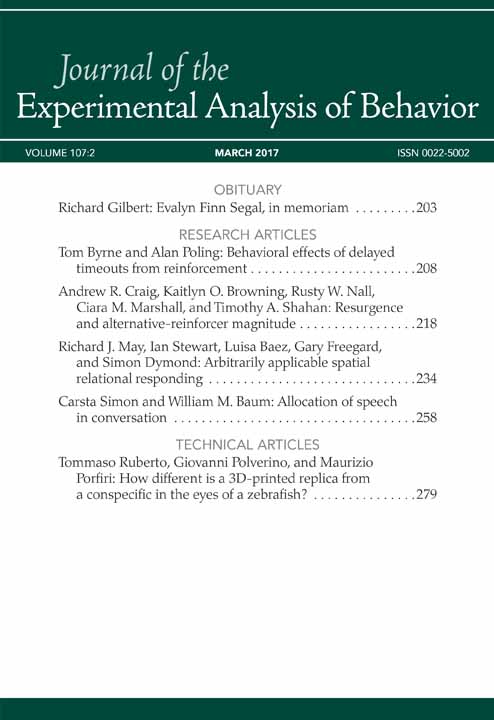Allocation of speech in conversation
Abstract
In a replication and extension of Conger and Killeen's (1974) widely cited demonstration of matching in conversations, we evaluated nine participants’ allocation of speech and gaze to two conversational partners. German speakers participated in two 90-min sessions in which confederates uttered approval on independent variable-interval schedules. In one of the sessions, confederates uttered approval contingent upon and contiguous with eye contact whereas in the other session approval was uttered independent of the participant's gaze. Several measures of participants’ verbal behavior were taken, including relative duration and rate of speech and gaze. These were compared to confederates’ relative rate of approval and relative duration and rate of talk. The generalized matching equation was fitted to the various relations between participants’ behavior and confederates’ behavior. Conger and Killeen's results were not replicated; participants’ response allocation did not show a systematic relation to the confederates’ relative rate of approval. The strongest relations were to overall talk, rather than approval. In both conditions, the participant talked more to the confederate who talked less—inverse or antimatching. Participants’ gaze showed the same inverse relation to the confederates’ talk. Requiring gaze to be directed toward a confederate for delivery of approval made no difference in the results. The absence of a difference combined with prior research suggests that matching or antimatching in conversations is more likely due to induction than to reinforcement.




